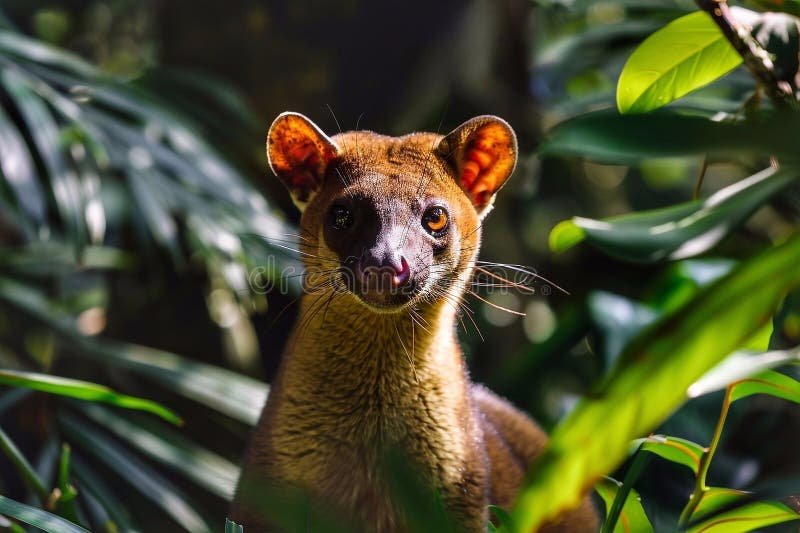
Imagine sitting around a campfire, listening to stories of legendary creatures. That’s what folklore is all about—capturing the essence of a culture through tales and symbols. For the people of Madagascar, the fossa is more than just a creature in the forest; it’s a symbol of strength, cunning, and sometimes a bit of mischief. Let’s dive into how the fossa is woven into the cultural fabric of Madagascar and beyond, and explore the intriguing stories that have emerged over the years.
The Fossa’s Role in Malagasy Folklore
When it comes to Malagasy folklore, the fossa doesn’t just make a cameo; it often takes center stage. You might hear tales where the fossa is portrayed as a guardian spirit of the forest. In these stories, it represents both the beauty and the power of nature. The fossa is sometimes seen as a trickster, akin to figures like Hermes in Greek mythology. These stories highlight the animal’s agility and stealth, emphasizing its role as a hunter.
In one popular tale, the fossa is said to have been blessed by the forest spirits. This blessing grants it the ability to move silently through the trees, making it an excellent hunter. The people tell these stories to teach lessons about respect for nature and the importance of living in harmony with the environment. After all, while the fossa is a skilled predator, it’s also an essential part of the ecosystem.
The Fossa in Art and Literature
Art and literature often reflect the values and beliefs of a culture, and the fossa is no exception. In Madagascar, local artists frequently depict the fossa in paintings, sculptures, and textiles. You’ll find images of this sleek creature elegantly intertwined with rich foliage, symbolizing its home and habitat. These representations serve as a reminder of the delicate relationship between the fossa and the lush wilderness it inhabits.
Literature, too, has embraced this captivating animal. Writers often use the fossa as a metaphor for cunning and adaptability. Imagine a fossa stalking its prey—its stealth and precision make it a compelling figure. This symbolism can be found in various forms, from children’s stories to adult novels, where the fossa represents human traits like cleverness and resilience. It’s interesting how the characteristics of an animal can mirror our own lives and struggles.
Folklore and Conservation: A Double-Edged Sword
While the fossa is celebrated in folklore, it also faces real challenges in the wild. Deforestation and habitat loss threaten its existence, leading to a decline in the fossa population. The stories surrounding the fossa can have a double meaning: they serve as cultural heritage while also reminding us of the urgent need for conservation. Here’s the thing: when people connect emotionally with an animal through stories, they’re often more inclined to protect it.
Conservation groups in Madagascar have tapped into this cultural significance, using folklore as a tool for awareness. By emphasizing the importance of the fossa in local tales, they help communities understand what’s at stake if this magnificent creature disappears. It’s a clever strategy that combines cultural pride with environmental stewardship, illustrating how folklore can play a vital role in modern conservation efforts.
Global Recognition of the Fossa
Though it’s primarily tied to Madagascar, the fossa has gained recognition worldwide. Nature documentaries and wildlife programs have featured the fossa, showcasing its unique traits and behaviors. This exposure has helped shift perceptions and sparked interest beyond Madagascar, inspiring people to learn more about this remarkable animal. Honestly, it’s amazing how a creature from a remote island can capture hearts globally.
Artistic representations of the fossa have also made their way into international galleries and exhibitions. This global presence helps bridge cultures, allowing people to appreciate the fossa from different perspectives. It’s like a conversation starter—when people see a painting of a fossa, they might be curious to learn about its folklore, ecology, and role in Madagascar’s culture. It opens the door to discussions about wildlife and conservation on a broader scale.
Connecting Folklore with Modern Understandings
One of the wonderful aspects of folklore is its ability to evolve. While traditional stories about the fossa may focus on its cunning nature, modern interpretations can bring fresh perspectives. You might find contemporary artists and writers infusing these tales with ideas about environmentalism and the impact of climate change. This connection between past and present shows how folklore remains relevant, even in a rapidly changing world.
By exploring these modern narratives, we can better understand the intersection of culture and nature. The fossa can symbolize not just survival but also the delicate balance we must maintain with our environment. As we share stories and knowledge about this fascinating creature, we also foster a sense of responsibility for its protection—allowing folklore to play a role in conservation efforts.
Embracing the Fossa: What Can We Do?
So, what can you do to celebrate and protect the amazing fossa? First, educate yourself and others about this unique creature. The more you know, the better equipped you are to advocate for its conservation. Sharing folklore and stories about the fossa can inspire others to appreciate its significance in Madagascar’s culture.
Here are a few simple ways to make a difference:
- Support Conservation Organizations: Look for reputable organizations focused on preserving Madagascar’s wildlife and habitats.
- Spread Awareness: Use social media or local community events to share interesting facts and stories about the fossa.
- Visit Madagascar: If you’re able, consider eco-tourism as a way to support local communities and conservation efforts directly.
Protecting the fossa means appreciating its place in culture and understanding the threats it faces. Every little step counts towards ensuring that this extraordinary creature continues to thrive.
In conclusion, the fossa is not just a fascinating animal; it’s a symbol deeply woven into the cultural fabric of Madagascar. Through folklore, art, and modern interpretations, the fossa teaches us about nature’s complexity and the importance of conservation. By embracing this unique creature, we honor its legacy while taking steps to ensure its future.

